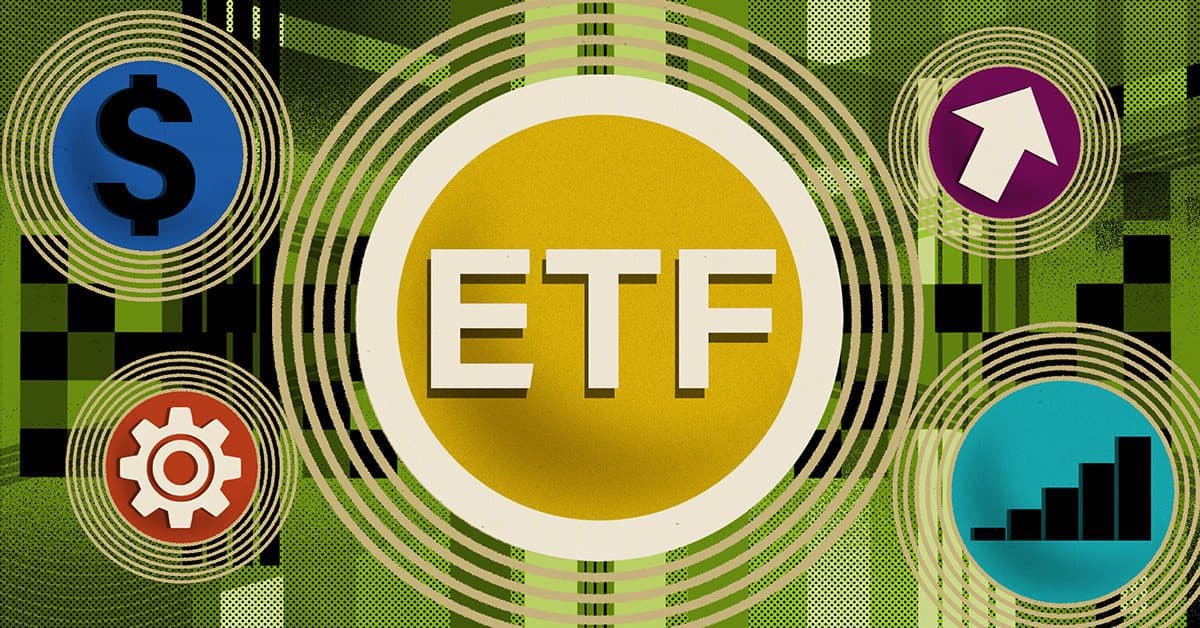What Does Demand For Bitcoin Futures ETFs Look Like in 2022?
Global X’s offering could be “more palatable” for advisors and long-term investors compared to its competitors

Blockworks Exclusive Art by Axel Rangel
key takeaways
- The ProShares Bitcoin Strategy ETF (BITO) underperformed spot bitcoin by 2.34% from its launch on Oct. 19 to Dec. 21, according to Bloomberg Intelligence Analyst James Seyffart
- BITO’s December inflows total roughly $50 million so far, compared to $1.2 billion in October, FactSet data shows
The underperformance of the US’s first bitcoin futures ETF relative to the crypto asset’s spot price in its first two months of trading limit the types of investors interested and ultimately its asset growth, according to industry professionals.
But offerings that include a smaller allocation to bitcoin futures contracts could see more demand in 2022, some argued, particularly among longer-term investors.
Bloomberg Intelligence ETF Analyst James Seyffart noted in a Twitter post on Wednesday that the ProShares Bitcoin Strategy ETF (BITO) underperformed spot bitcoin by 2.34% from its launch on Oct. 19 to Dec. 21.
Extrapolated out over 12 months, Seyffart added, BITO would trail spot bitcoin by between 13 and 14% in its first year on the market.
“That’s a pretty big gap between bitcoin and your fund,” Bloomberg Intelligence ETF Analyst Eric Balchunas told Blockworks, noting that many financial advisors likely would not invest in the offering on behalf of clients. “That said, I think BITO is a great trading tool, and I think it will continue to be used for short-term exposure. It tracks great short-term, and its correlation is awesome.”
Though BITO was the first bitcoin futures ETF to launch in the US, the Valkyrie Bitcoin Strategy (BTF) launched three days later. It currently has about $55 million in assets under management, according to Valkyrie Investments’ website.
The VanEck Bitcoin Strategy ETF (XBTF) and the Global X Blockchain and Bitcoin Strategy ETF (BITS) launched in November. XBTF and BITS have $17 million and $9 million in assets, respectively.
Unlike the other three bitcoin futures products, BITS also invests in US companies that directly own digital assets and may gain access to blockchain companies indirectly through ETFs.
Industry professionals have labeled roll costs as one of several downsides to bitcoin futures ETFs. Maintaining a smaller allocation to bitcoin futures allows the firm to be “nimbler” to potentially find better value and reduce roll costs, Global X Research Analyst Matt Kunke told Blockworks last month.
“I’m going to be watching it next year to see if it gets any looks,” Balchunas said of the Global X offering.
“BITS just seems like it’s one of those ETFs that could be palatable enough to an advisor given that small roll [cost], but at the same time have more kick than a blockchain stock ETF.”
Remaining demand for bitcoin futures ETF?
BITO notched inflows of more than $1.2 billion from its launch until the end of October, according to FactSet Data. Flows into the product have slowed, as they totaled $542 million in November and $50 million so far in December.
“Obviously it has completely plateaued, as all of the people who wanted to buy BITO have bought it basically,” Balchunas said. “Maybe those flows trickle in for the next couple months.”
Dave Nadig, CIO and director of research for ETF Trends and ETF Database, said that investors, particularly those who have invested in commodities, understand the deficiencies of futures versus spot.
“The funds really target a small Venn diagram of people who want crypto exposure on a fairly short-term basis but are unwilling or unable to access the crypto markets directly,” he told Blockworks. “I would not expect the [assets under management] to move significantly, as I suspect these funds will be trading vehicles.”
Though Nadig added he does not expect any new “plain-vanilla” bitcoin futures ETFs, other types of products, such as WisdomTree’s Enhanced Commodity Strategy Fund (GCC), could make allocations to bitcoin futures.
GCC, an actively managed ETF seeking to provide broad exposure to a diversified basket of commodities, became the first ETF to add bitcoin futures in October.
Still no spot bitcoin ETF
The US Securities and Exchange Commission (SEC) has rejected a variety of spot bitcoin ETF proposals, while regulators in Europe, Canada and other regions have allowed such products to trade.
“The SEC is unlikely to approve a spot Bitcoin ETF in 2022, we believe, leaving US investors reliant on less-efficient futures, trusts and themed equity ETFs for fund exposure,” Seyffart wrote in a Dec. 9 research note, adding that Ethereum futures ETFs could reach US exchanges before a spot bitcoin product.
As part of its denial of VanEck’s planned spot bitcoin fund, the SEC said in a letter that the Cboe BZX Exchange, on which the ETF’s shares would have traded, “has not met its burden” that the proposal meets the requirements of the Securities Exchange Act of 1934.
“The SEC cannot have been much more clear in their guidance. Any approval would be a shocking surprise,” Nadig said.
“I give essentially zero odds to a pure Bitcoin ETF in 2022.”
Balchunas said he always expected the ProShares Bitcoin Strategy ETF to be used by traders more than long-term investors, noting that his optimism for an ETF that invests directly in bitcoin remains strong.
“I think a spot bitcoin ETF, and ultimately different takes on it — like a spot Ethereum, a crypto picking active ETF, a crypto basket…S&P of crypto — is going to fly off the shelves,” he said, “and be the big category that we all are expecting.”
Get the day’s top crypto news and insights delivered to your inbox every evening. Subscribe to Blockworks’ free newsletter now.





